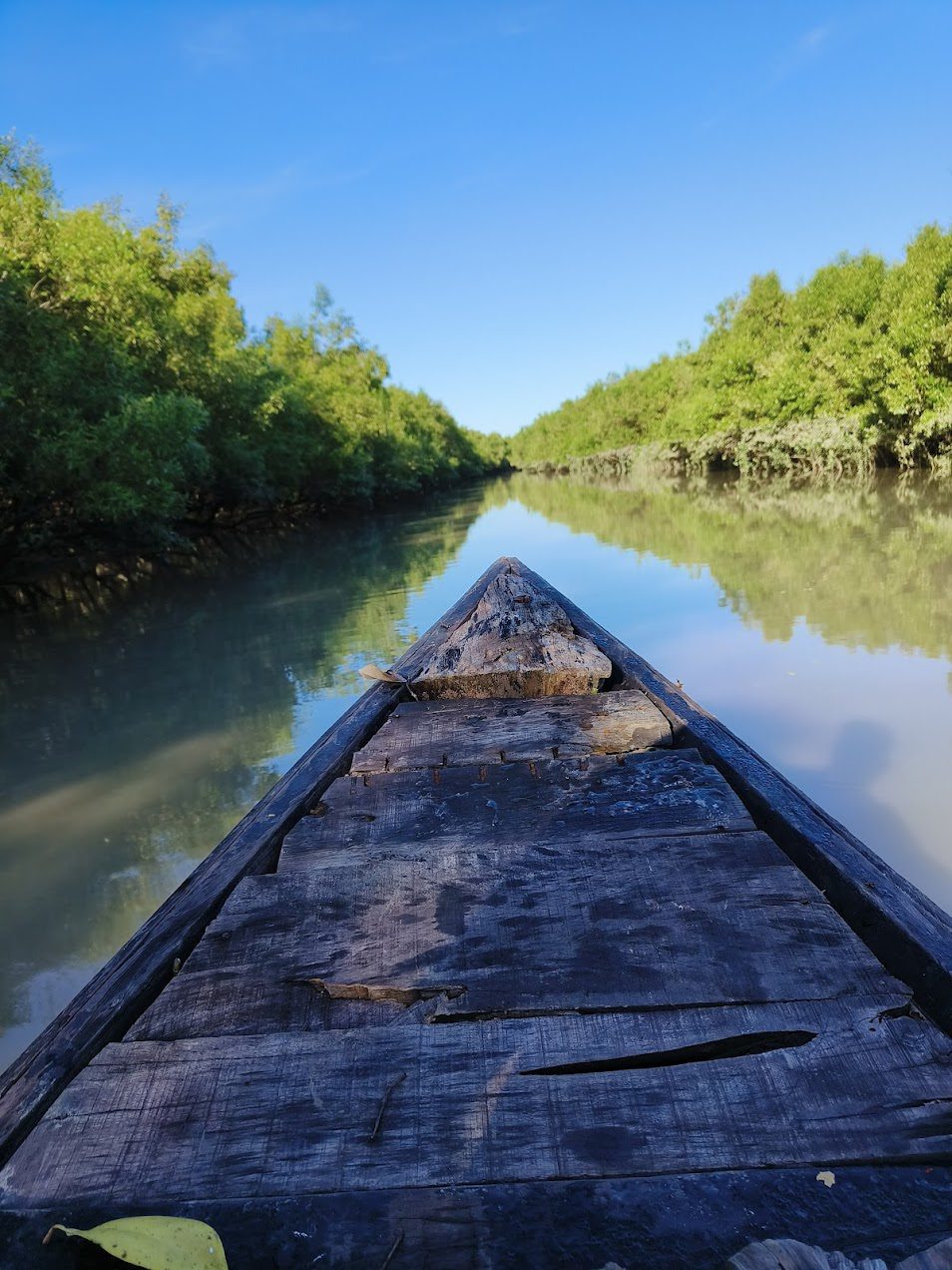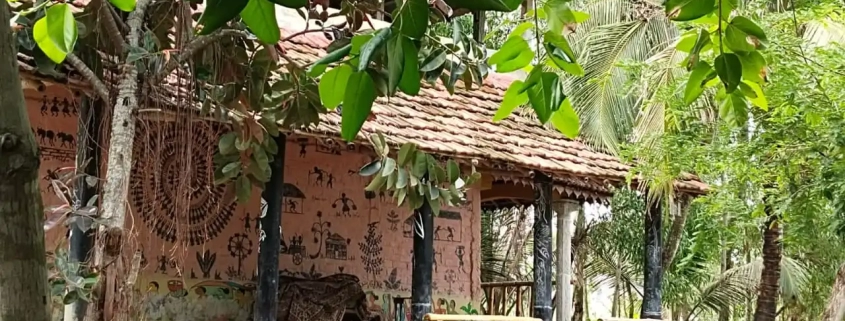Challenges and Conservation: Preserving Sundarbans for Future Generations
A silent struggle rages in the mysterious Sundarban Kolkata tour, where the rhythmic lull of river currents blends with the whispering of mangrove leaves. An existential dilemma lies ahead for this UNESCO World Heritage Site, a crucible of biodiversity that must balance preservation with danger. With its fascinating array of flora and animals, the Sundarbans are more than just a physical location; they are a living, breathing example of how intricately intertwined all of nature is. We discover a story of struggles and conservation attempts as we enter the shadows of its thick mangrove thickets. It is a story in which the urgent murmurs of a sustainable future blend with the echoing echoes of the past.
8 Challenges and Conservation for Future Generations
The Sundarbans, a vast mangrove delta at the confluence of several rivers, stand as one of the world’s unique ecosystems. Spread across India and Bangladesh, this UNESCO World Heritage Site is not only a haven for biodiversity but also a critical barrier against cyclones and storm surges. However, the challenges faced by the Sundarban eco tourism are as intricate as the mangrove roots that define its landscape. This article delves into the multifaceted challenges confronting the Sundarbans and explores the ongoing conservation efforts crucial for preserving this ecological treasure for generations to come.

Mangrove Deforestation:
One of the foremost challenges threatening Sundarban eco tourism is mangrove deforestation. The relentless demand for resources like wood and the expansion of agriculture pose a significant threat to the mangrove cover. The delicate balance of this ecosystem relies on the mangroves, which act as a buffer against tidal waves and provide a unique habitat for diverse flora and fauna.
Climate Change Impact:
The Sundarbans are not immune to the impacts of climate change. Rising sea levels and increased frequency of extreme weather events, such as cyclones, put immense pressure on this deltaic region. The delicate ecological balance is disrupted, affecting both wildlife and the livelihoods of the communities dependent on the Sundarbans.
Biodiversity Loss:
The Sundarban Kolkata tour boasts incredible biodiversity, including the iconic Royal Bengal Tigers. However, habitat loss, pollution, and poaching threaten various species. The delicate mangrove ecosystem supports numerous aquatic and avian species, making conservation efforts imperative to prevent irreversible loss.
Human-Wildlife Conflict:
As human populations in the Sundarbans region grow, so does the potential for conflict between humans and wildlife. The encroachment of human settlements into wildlife habitats results in increased confrontations, particularly with tigers. Balancing the needs of both communities and wildlife is a delicate challenge that requires thoughtful conservation strategies.
Pollution and Habitat Degradation:
The Sundarban Kolkata tour faces pollution challenges from multiple sources, including industrial discharge, agricultural runoff, and plastic waste. The delicate balance of the ecosystem is disrupted by pollutants, impacting the health of both flora and fauna. Habitat degradation further exacerbates the vulnerability of the Sundarbans.
Conservation Initiatives:
Efforts to address these challenges and ensure the preservation of the Sundarban eco tourism are underway. Conservation organizations, governmental bodies, and local communities are working collaboratively on initiatives such as afforestation projects, sustainable resource management, and community-based conservation programs. The establishment of protected areas and stricter enforcement of wildlife protection laws are also integral to these efforts.
Community Involvement:
In recognizing the vital role of local communities, conservation initiatives increasingly focus on community involvement. Engaging residents in sustainable livelihood practices, raising awareness about the importance of conservation, and providing alternative solutions to reduce human-wildlife conflict are essential components of these efforts.
International Collaboration:
Given that the Sundarban eco tourism spans national borders, international collaboration is crucial for effective conservation. Joint efforts between India and Bangladesh, along with support from global conservation organizations, are essential to addressing the transboundary challenges faced by the Sundarbans.
The Sundarban eco tourism stands at a critical juncture, facing numerous challenges that require immediate and sustained attention. Conservation efforts, driven by a combination of scientific research, community engagement, and international collaboration, hold the key to securing the future of this unique and irreplaceable ecosystem. The Sundarbans, with its rich biodiversity and ecological significance, deserves dedicated efforts to ensure its preservation for the benefit of current and future generations.
Conclusion
As the sun sets over the labyrinth of mangrove roots, the future of the Sundarban Kolkata tour hangs in the balance, caught between the challenges it faces and the tireless efforts dedicated to its preservation. The journey toward conserving this unique ecosystem is a collective endeavor, blending science, community engagement, and international cooperation. The delicate dance between human activities and the intricate web of life in the Sundarbans requires a harmonious choreography, orchestrated to ensure a sustainable future. Through relentless commitment to conservation initiatives, from afforestation projects to community involvement, we pave the way for the Sundarbans to endure as a testament to the resilience of our planet’s natural wonders, a legacy bequeathed to the generations yet to come.
FAQs
What role does human activity play in the conservation challenges of the Sundarbans?
Human activities, such as deforestation, overfishing, and pollution, contribute significantly to the conservation challenges. These activities disturb the natural habitat, affecting the wildlife and the overall health of the Sundarbans.
Are there conservation initiatives in place for the Sundarbans?
Yes, several conservation initiatives are underway, both at national and international levels. These efforts focus on sustainable resource management, community involvement, and raising awareness about the importance of preserving the Sundarbans.
How can local communities contribute to the conservation of the Sundarbans?
Local communities play a crucial role in conservation. Sustainable livelihood practices, responsible tourism, and active participation in conservation projects empower communities to be guardians of the Sundarbans.
What measures are being taken to address rising sea levels in the Sundarbans?
Adaptation strategies, such as constructing embankments and introducing salt-tolerant varieties of vegetation, are being implemented to address the challenges posed by rising sea levels in the Sundarbans.





